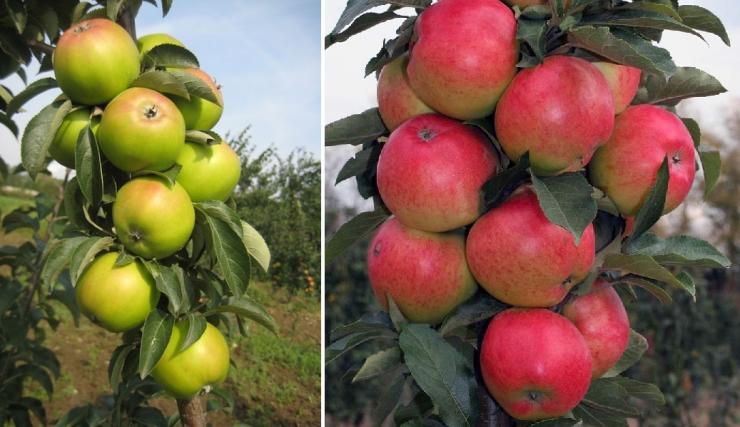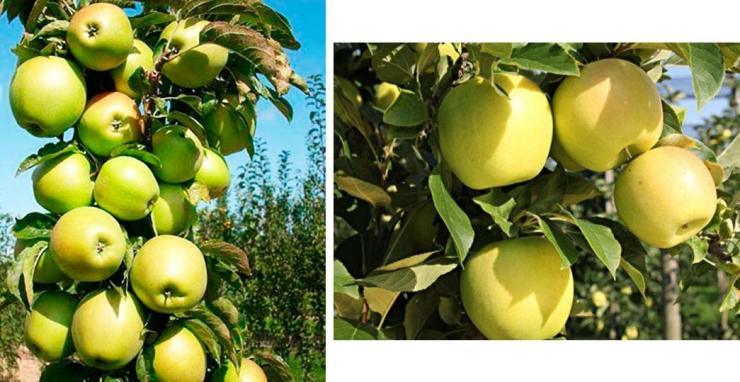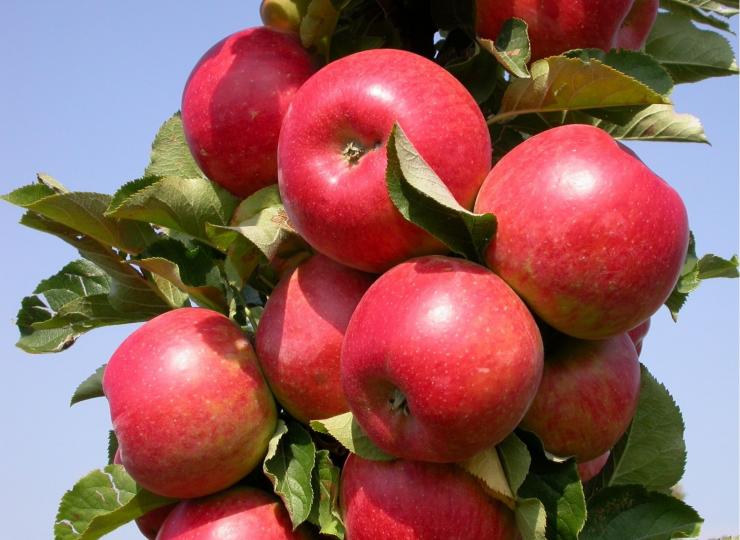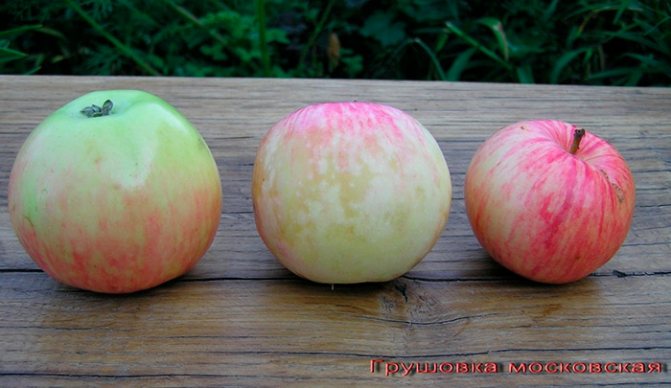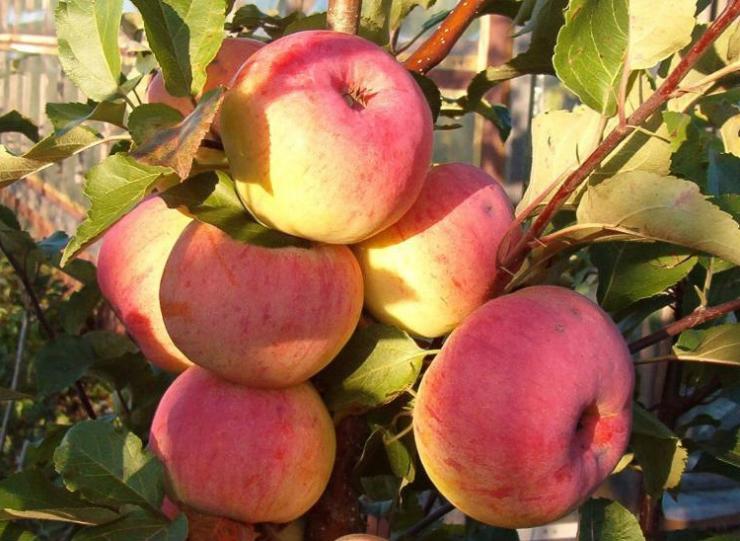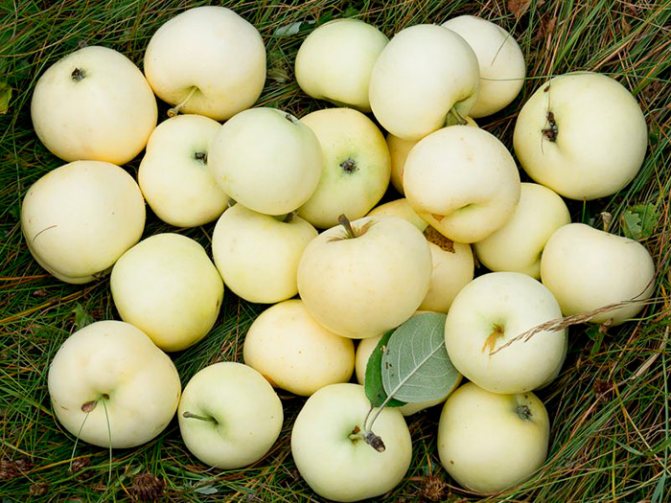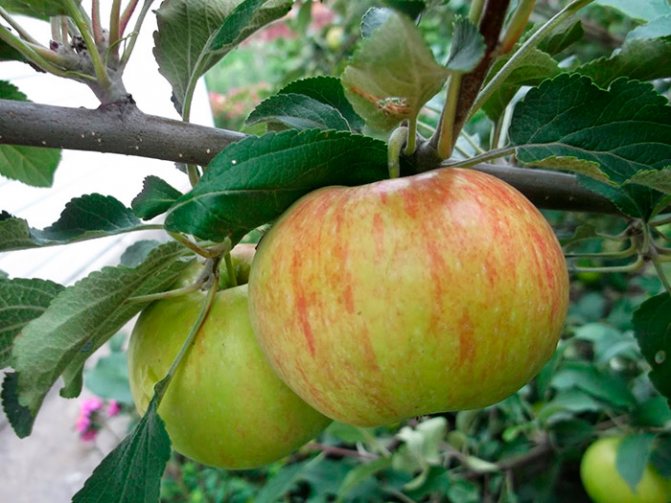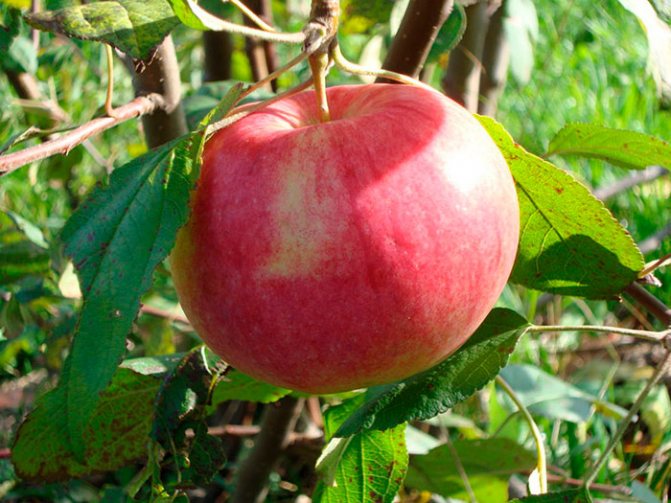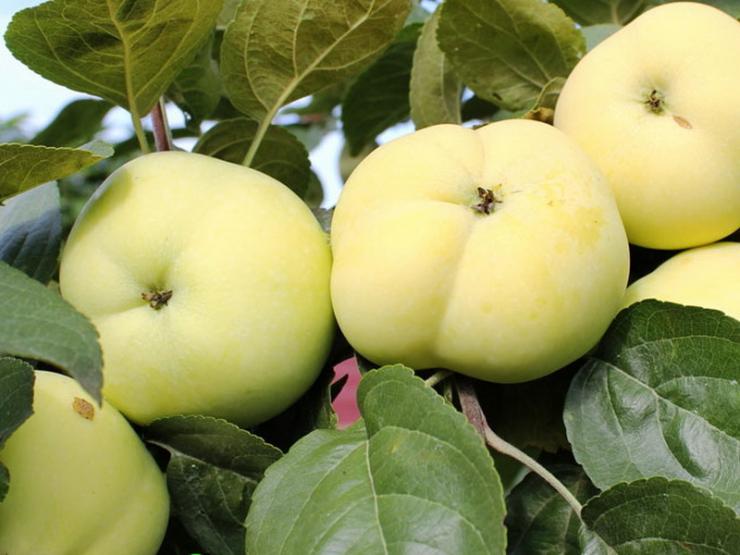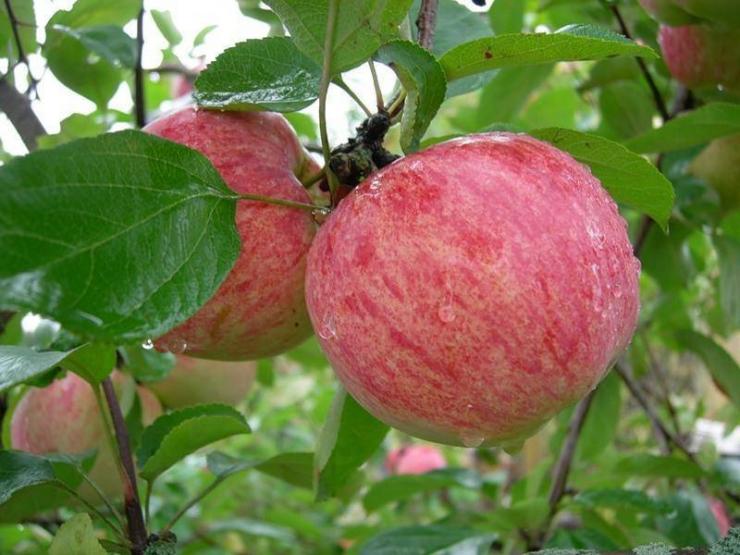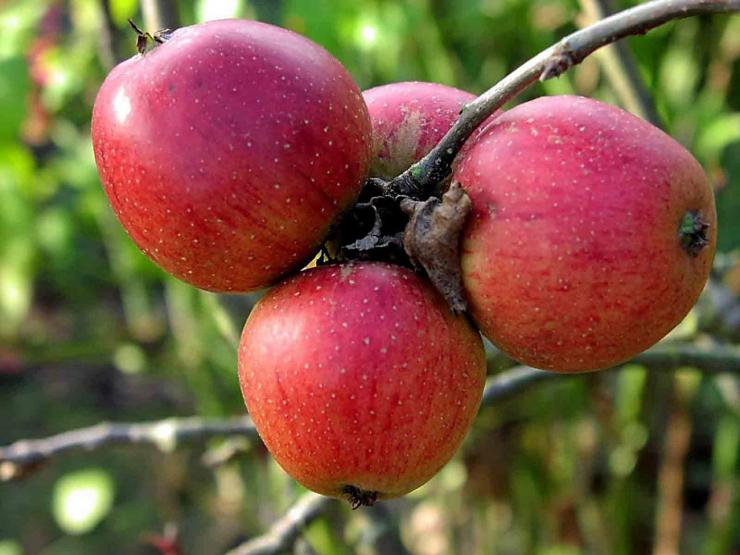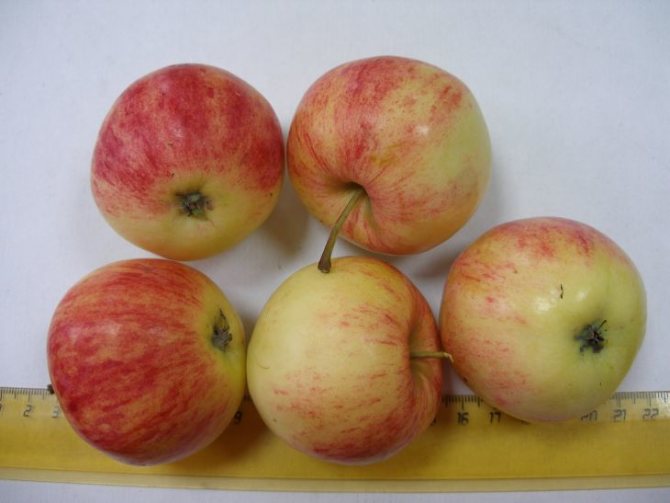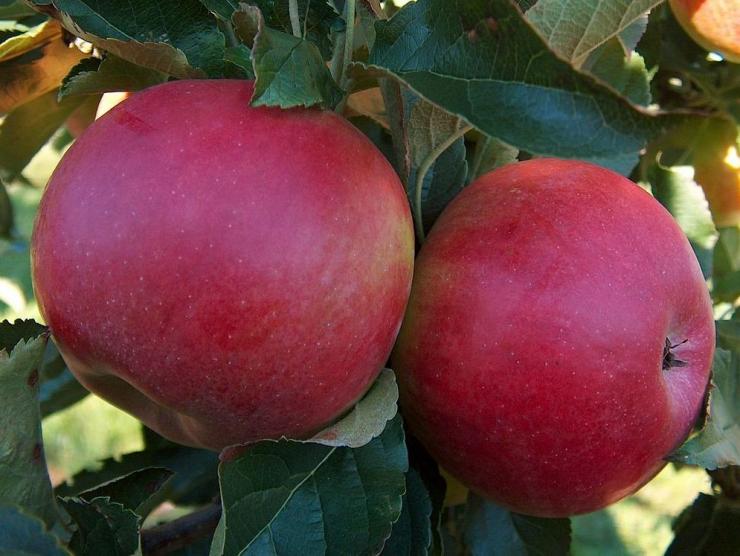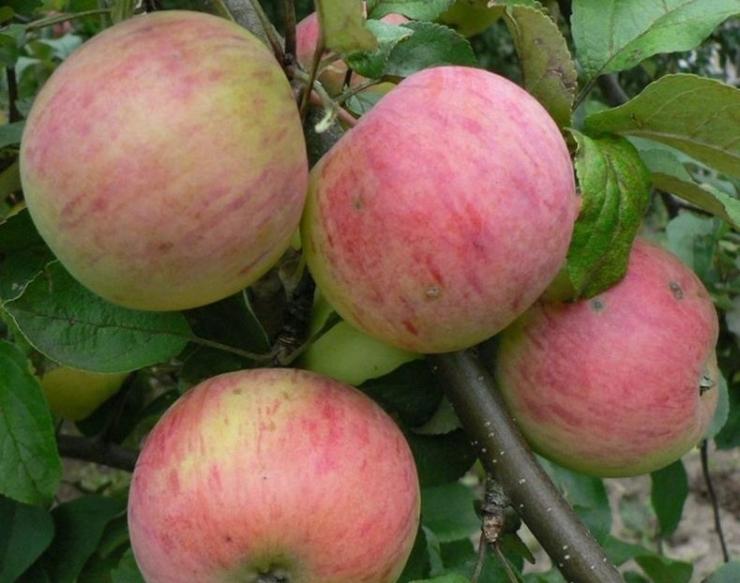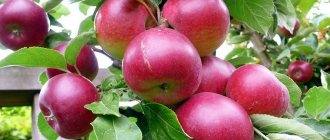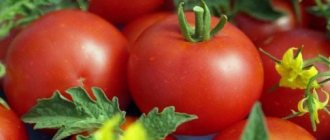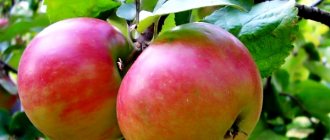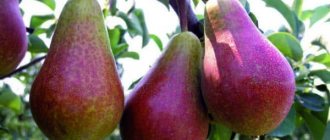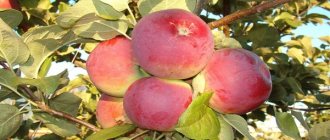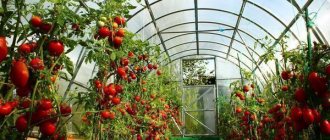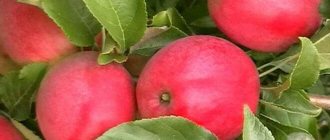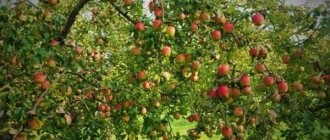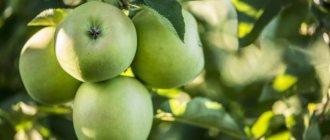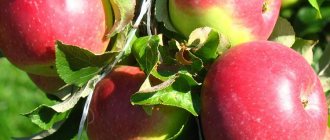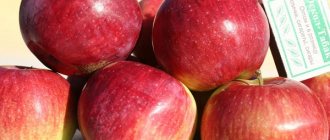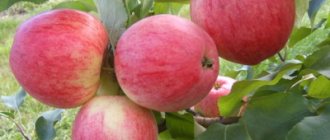When choosing apple varieties for the Moscow region, pay attention to the well-known varieties tested by experience. They are for the most part highly winter hardy, compact and resistant to scab and other diseases. In this article you will find a photo and a brief description of 39 varieties of summer, autumn and winter ripening periods, including columnar, fruitful and low-growing apple trees. I will dwell on the pros and cons of each variety in more detail.
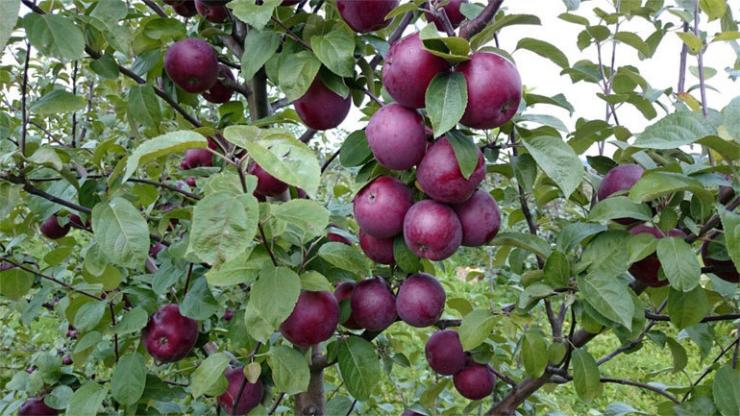
Rating of apple trees
By sweetness
As one of the options:
- Winter lungwort;
- Scarlet anise;
- Anise gray;
- Aport;
- Alexander;
- Peaceful;
- Rososhanskoe striped;
- Gift to Grafsky.
By sweetness many prefer Dessert Isaev and Medunitsa winter.
For resistance to scab and other diseases
For yourself, you should already note what is often found in the characteristics of the advantages of apple trees, their resistance to such dangerous disease like scab... And for good reason:
- After all, you cannot sell apples affected by a scab;
- And eating yourself is unpleasant.
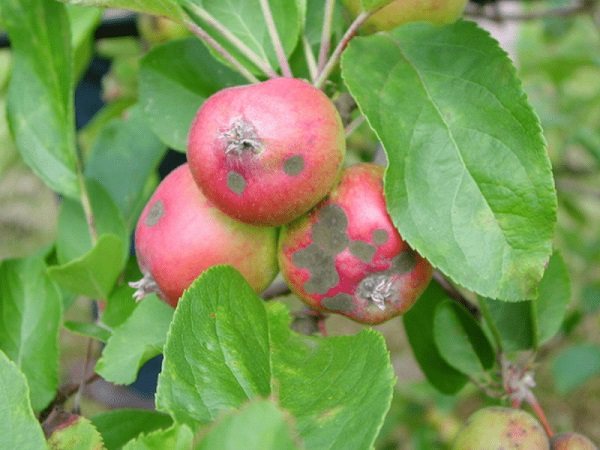

Scab on an apple tree.
So they even create varieties immune to such a sore. Employees of the Oryol Research Institute specialize in the following varieties:
- Imrus;
- Venyaminovskoe;
- Bolotovskoe;
- Freshness;
- Rozhdestvenskoe;
- Memory of Semakin;
- Good news;
- Orlik. Other.
By the duration of storage of fruits
- Anise striped;
- Aport;
- Cortland;
- Lobo with low winter hardiness;
- Rososhanskoe striped;
- Moscow later. Until the new harvest.
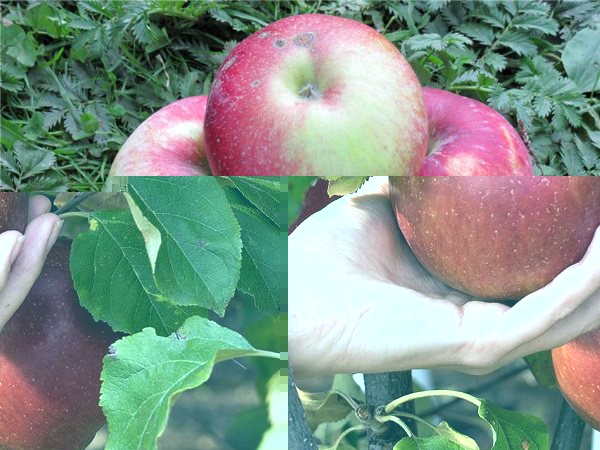

Apple tree Lobo.
Winter varieties of apples
Winter varieties of apple trees are good not only because the fruits ripen in winter, but also because the fruits are resistant to severe frosts, do not deteriorate during storage for several months, and rarely get sick.
Bogatyr
The cultivar was bred by the breeder Chernenko S.F., who crossed the Antonovka variety and the Renet Landsberg variety. The late winter variety Bogatyr is considered one of the most productive and high-yielding varieties.
Plant height can reach seven meters. The crown is thinned, spreading. The plant has dark green oval leaves. The tree grows flat-round fruits with a wide base, their weight reaches 200 g. The surface is smooth, ribbed, the peel is light green, then turns yellow with a slight blush. The white flesh is fine-grained, juicy and crunchy. It smells good.
The variety begins to bear fruit abundantly by 6-7 years after planting the seedling in the ground. One adult tree produces 55-80 kg of fruit. The fruit is fully ripe by mid-October. The shelf life of fruits can last about 4-5 months.
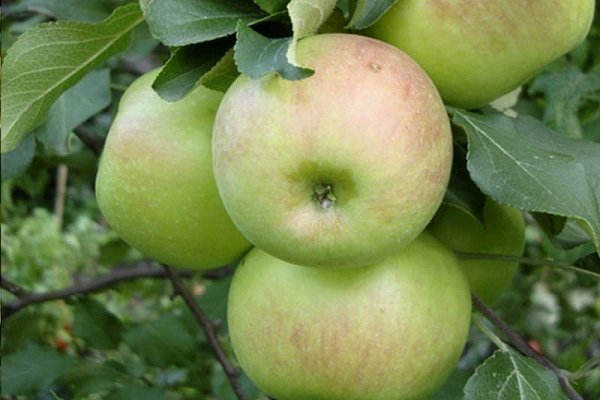

Bolotovskoe
When breeding a variety, the main goal of the breeder Sedov Evgeny Nikolaevich was to create a species that would be resistant to scab. In 1977, the breeder managed to get a new unique Bolotovskoe variety, obtained by hybridizing the Skryzhapelkh species in 1924.
Elongated, dark green leaves grow on the tree. The plant has a non-thickened spherical crown. The plant is medium-sized and grows quickly. Shoots and branches with smooth brown bark. The fruits are medium in size, one fruit weighs up to 160 g. The peel initially has a light green hue, when fully ripe, a pink blush appears. Delicate green pulp, firm, juicy. The aroma is pleasant, pronounced.
Fruiting begins 7-8 years after the seedling is planted in open ground. Harvesting begins in mid-September.About 200 kg of fruit are harvested from one adult tree. Proper storage will ensure long-term preservation of the fruits, until the end of winter.
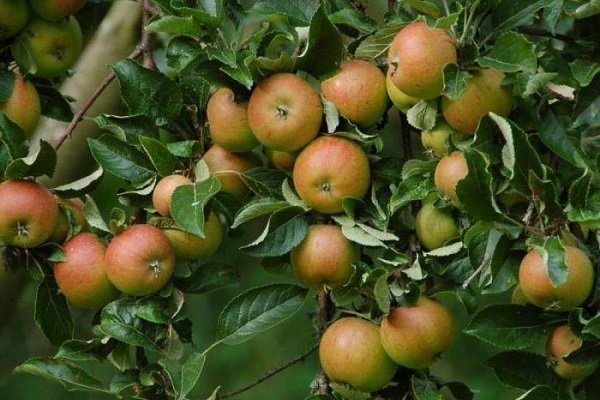

Welsey
The variety was bred in 1860 in the United States, Minnesota. The seeds of the Siberian apple tree were used for the work. Welsey has been cultivated in Russia since the late 19th century.
The trees are medium-sized, reaching a height of 4-5 meters. The crown has a wide, pyramidal shape, becoming rounded with age. Leaves are small, with a shiny surface, dark green hue. The fruits are characterized by high consumer qualities. The average weight of one fruit reaches 80-150 g. Apples have a flat-round, regular shape. The peel is smooth, thin, colored in a light yellow tint. There are light, well-visible subcutaneous points. The pulp is white, juicy, dense. The taste is sweet and sour, the aroma is good.
The plant begins to bear fruit in 3-4 years, but the fruits ripen not annually, but after 1 year. Apples ripen unevenly, so the harvest is carried out twice - in early September and early October. On average, about 200-250 kg of fruit are harvested from one tree per season.
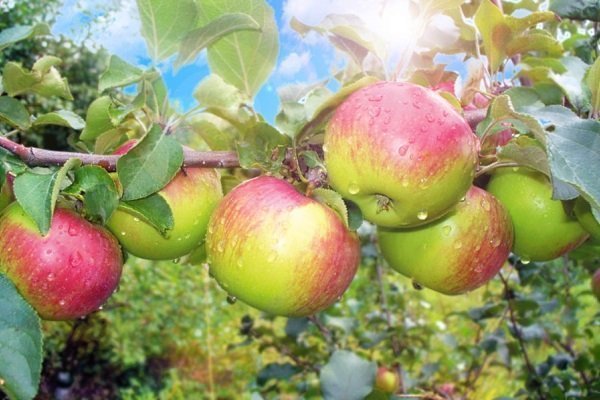

Aphrodite
Variety Aphrodite was bred in 1981 at VNIISPK from seeds of free pollination of hybrid form 814. Four breeders worked on breeding the variety - E. A. Dolmatova, V. V. Zhdanov, E. N. Sedov, Z. M. Serova.
The trees are tall and grow quickly. They can reach up to 10 meters in height. The crown is dense, has a rounded shape. Shoots of brown color. A mature tree has a smooth greenish-brown bark. Leaves are medium in size, oblong, dark green with a yellowish tinge. Fruits are medium, weigh up to 140 g. The peel is dense, greenish-yellow, smooth. The pulp is dense, white, with pink veins. The taste is sweet and sour.
The plant begins to bear fruit in 4-5 years after planting the seedling in the ground. Harvesting occurs in mid to late September. Fruit can be stored in a cold room until the end of the year. On average, up to 150 kg of apples are harvested from one tree.
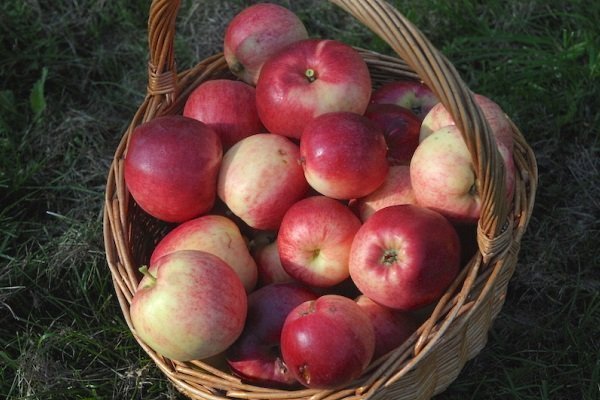

Gift to Grafsky
This variety was bred in 1979 at the Institute of Breeding and Technology. VV Kichina, NG Morozova, LF Tulinova, VP Yagunov worked on the creation. The apple tree was obtained by crossing the donor D101 and the Vyaznikovka variety. The name was received in honor of the director of the state farm named after "17 MYUD" M.G. Grafsky.
The tree is vigorous, standard type, fast-growing. The crown has a back-pyramidal shape. The bark on the branches is a dark gray shade. Leaves are medium in size, elongated, slightly wavy, dark green in color. The fruits are large, one fruit weighs in the range of 200-350 g. Apples have a rounded-conical shape, slightly ribbed, uneven in size. The peel is dense, the main color is yellow, the integumentary color is violet-red. The pulp is light yellow, sweet and sour, fine-grained, juicy. The aroma is delicate and pleasant.
The plant enters fruiting in 4-5 years after planting the seedling in the ground. Fruit ripening occurs at the beginning of October, consumer maturity occurs by the end of the month. On average, up to 250 kg of fruits are obtained from one adult plant.
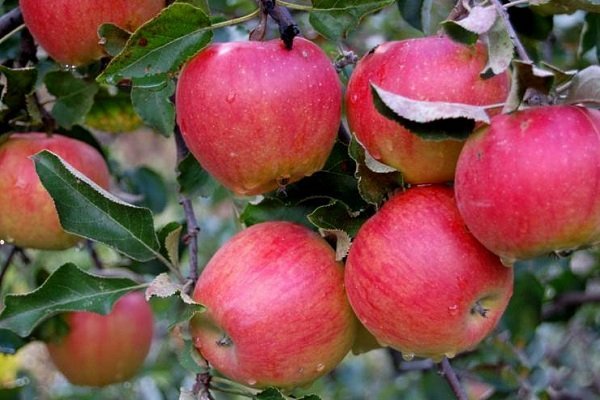

Winter varieties for the Moscow region
Columnar
Arbat is both a decorative look and the benefits of juicy apples. They can be stored for quite a long time - more than 8 months.
Moscow necklace - stored for almost six months. Not so long ago withdrawn. Nurseries sell them successfully.
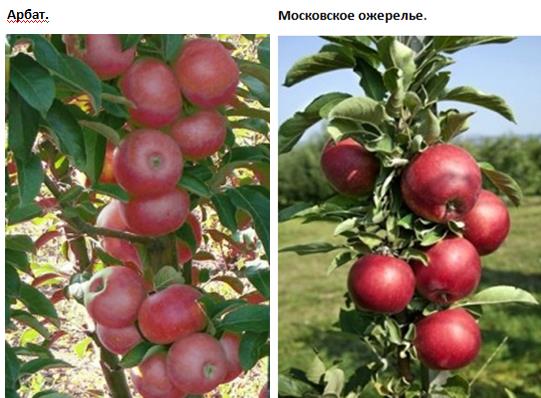

Semi-dwarf and dwarf
Often used by gardeners. Attracts annual fruiting and early maturity:
- Grushevka near Moscow;
- Bogatyr;
- Sokolovskoe;
- Grounded.
Promising
- Moscow later;
- Imrus;
- Bolotovskoe;
- Venyaminovskoe.
Autumn varieties of apple trees near Moscow
Many gardeners identify several good autumn varieties for planting in the Moscow region. Fruits ripen in autumn and have a long shelf life without loss of appearance and taste.
Lead
Shtrifel or Autumn striped is a variety whose history of creation is not known for certain. Presumably the apple tree came from Germany or Holland through the Baltic states.
The plant is powerful, tall, up to 7-8 meters in height. The crown is broadly spreading, domed. The leaves are rounded, dark green in color. Fruits are medium in size, one fruit weighs 80-110 g. Apples are predominantly round in shape, sometimes one-sided specimens are found. The skin is smooth, firm, greenish-yellow or yellow in color with a characteristic blush of vertical red stripes. The pulp is yellowish, juicy, sweetish-sour.
The plant enters fruiting 7-8 years after planting. The plant reaches its maximum yield indicators only by 15-18 years.
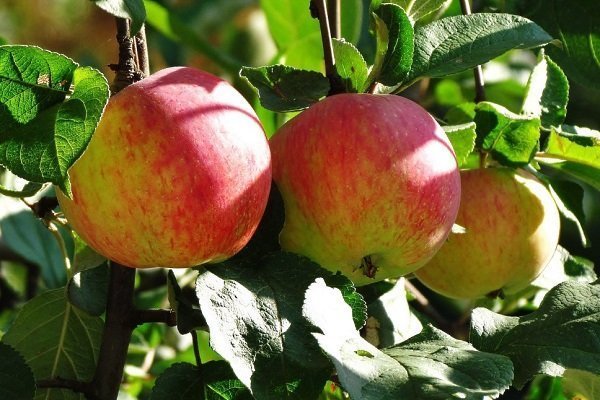

Bessemyanka Michurinskaya
The variety was bred by the famous breeder Michurin I.V., due to which the name was obtained. When crossing, two varieties were used - Skryzhapel and Bessemyanka Komsinskaya.
The tree is tall, strong, and has a powerful rounded crown. The plant is characterized by wrinkled, large leaves with an emerald hue. The fruits are large, weighing about 175 g, predominantly rounded and slightly ribbed. The peel is yellow with a slight shade of green, with a raspberry blush present. The pulp is soft, tender, juicy. Light wine taste is noticeable.
This is a high-yielding variety that begins to bear fruit 5-6 years after the seedling is planted in the ground. Harvesting can begin in mid-September. About 220 kg of fruits are harvested from one plant. On average, apples are stored for 3-3.5 months from the day they are picked.
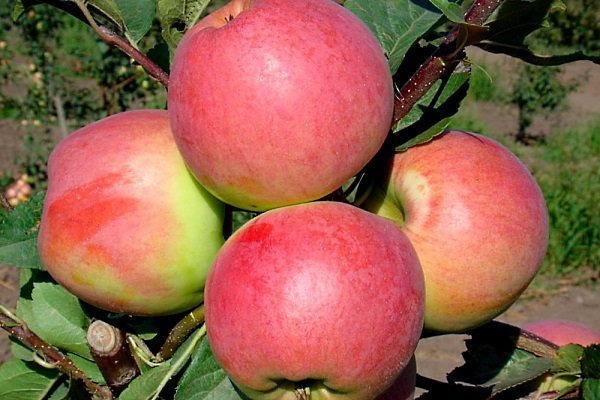

Orlovskoe striped
The variety was bred at VNIISPK by two well-known breeders in 1957. T. A, Trofimova and E. N. Sedov worked on the crossing, crossing the apple trees of Bessemyanka Michurinskaya and Macintosh.
The tree is medium-sized, has an extensive, round crown. Plants are frost-resistant and yield good yields. The leaves are round, large, green in color. The fruits are large, one fruit weighs 120-150 g, sometimes up to 220 g. The shape of the apples is oblong, broadly conical. The main color of the skin is greenish-yellow. When fully ripe, the fruits acquire a yellow tint.
Fruiting occurs 4 years after planting. Trees 8 years old give from 40 to 50 kg of fruit, fifteen-year-old trees can produce up to 80 kg of fruit. The harvest begins in early September. In a cold room, apples can be stored for up to 4 months.
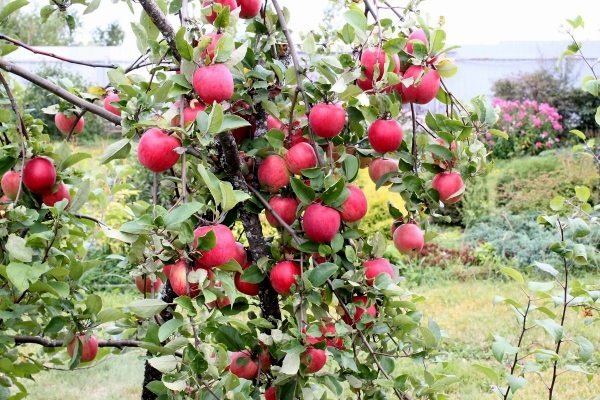

Sun
To obtain the Solnyshko variety, breeders used seeds from free pollination of the harvest of the early 80s of the last century. The first fruits appeared in 1990. E. N. Serov, V. V. Zhdanov, Z. M. Serova, E. A. Dolmatov were engaged in the cultivation of the apple tree.
The plant is short, characterized by a rounded crown. The trunks and main branches are covered with smooth reddish-brown bark. Leaves are ovoid, small, dark green in color. Fruits are medium, weigh up to 140 g, have an oblong, slightly sloping shape, wide ribbed. When removed from a tree, the peel is yellow-green, then becomes light yellow with a raspberry blush. The pulp is juicy.
Harvesting takes place in the fall, when the fruits are fully ripe. This period falls on September-October - the fruits are covered with a blush.
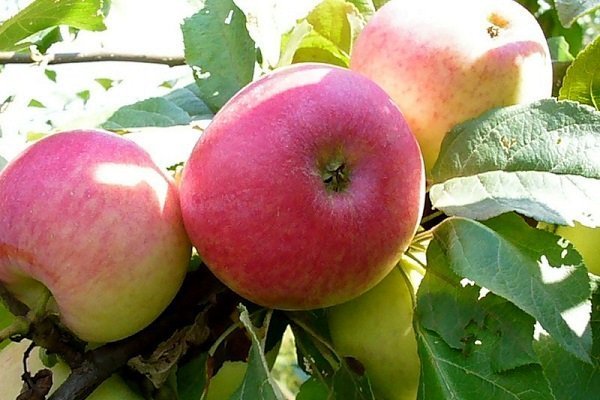

Antonovka ordinary
There is no data on how this variety appeared. Some scientists are convinced that Antonovka became an accidental hybrid of a cultivar that appeared naturally from a wild forest apple tree. But most breeders are sure of one thing - the apple tree appeared in the Tula or Kursk regions. N.I. Krasnoglazov first described the Antonovka variety in detail in 1848.
The tree is characterized by an oval crown shape; as the plant matures, it becomes spherical.Young branches and shoots are brown. Elongated, bright green leaves adorn the plant. The apples are medium-sized, weighing up to 160 g. Their peel during the harvest period has a green-yellow tint. During storage, the fruit turns yellow. The pulp is light, sweetish, sourness is strongly noticeable.
The tree begins to bear fruit by 7-8 years after planting. Full ripening of apples begins in late September or early October. As the plant grows, the yield increases. At the age of 20, one tree can produce up to 200 kg of fruit. Fruit storage is long - 3-4 months.
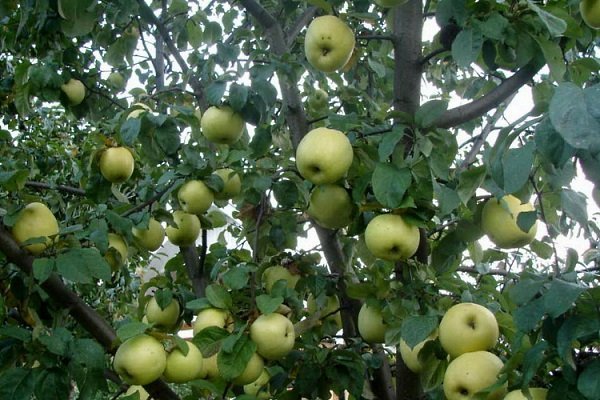

Pepin saffron
This variety was bred at the beginning of the 20th century by the famous breeder I. V. Michurin. In the selection, the variety Renet Orleansky and a hybrid of Chinese with Lithuanian pepinka were used.
The tree is medium-sized, reaching a height of three meters. The crown is rounded. The leaves are small, green in color. Fruits are medium or small, with an average weight of up to 140 g. The peel is dense, smooth. The apples are round-conical or cylindrical. The peel is yellow-green in color with a dark red blush. Subcutaneous points are present. The pulp is dense, fragrant, creamy. Apples are sweet and sour, aromatic.
The plant begins to bear fruit in the third year after planting. Dwarf trees begin to bear fruit in the second year. The harvest is good - up to 280 kg of apples can be harvested from one tree. The fruits are stored for a long time, the taste and external qualities do not deteriorate during transportation.
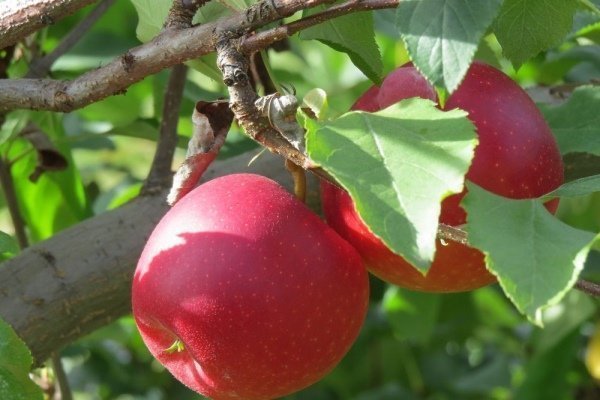

Zhigulevskoe
The breeder S.P.Kedrin was engaged in the cultivation of the variety. The scientist crossed the American Wagner variety with the Borovinka apple variety, which resulted in a new autumn variety that became popular in Russia.
The tree is dominated by a wide-pyramidal or tall, rounded crown, which takes on this shape during the fruiting period. The plant is medium-sized, does not exceed 4-5 m in height. Trunks and shoots are dark brown. The foliage is dense, the leaf plate is dark green. The leaves are characterized by an oblong, ovoid shape and large size. The apples are weighty, the weight of one fruit varies within 120-200 g. The shape of the fruit is round, sometimes wide-ribbed. The light yellow peel is dense and oily, with subcutaneous gray dots. The creamy pulp is coarse-grained with a sweet and sour taste.
This is a fast-growing, high-yielding variety that begins to bear fruit 4-5 years after planting a tree. They start picking apples in early September. On average, one adult plant produces up to 240 kg of fruits.
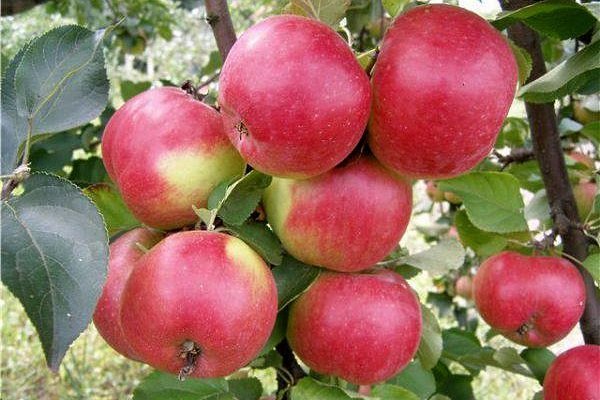

Slav
When breeding the autumn variety Slavyanin, the Antonovka red barrel apple tree and the SR 0523 variety were used. Crossbreeding was done by the breeder E.N.Sedov.
The tree is medium-sized, grows quickly, with a rounded crown. The fruits are large, weighing up to 160 g. Apples have a flattened, conical shape. The peel is shiny, greenish-yellow. The pulp is creamy, medium flat, juicy and tender. The taste is sweet and sour, the aroma is weak.
3-4 years after planting, the tree begins to bear fruit. Up to 200 kg of juicy fruits can be obtained from one plant.
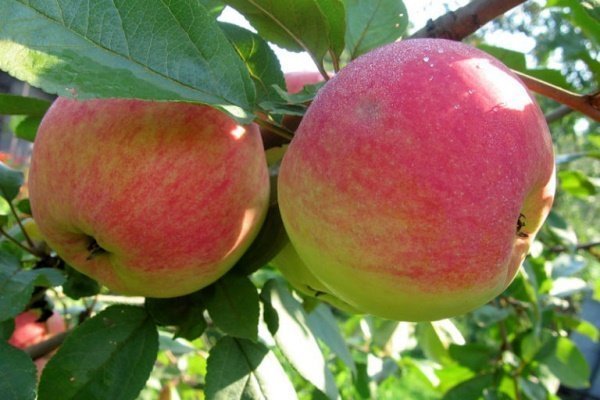

Marat Busurin
This is a new variety entered in the State Register of Breeding Achievements in 2001. Created in 1998 by breeder V.V. Kichina, who crossed the well-known Osennyaya Joy cultivar and the donor sample SR0523.
The tree is characterized by a neat, rounded crown, dark gray bark of shoots, curved leaves of a light green color with a slight shade of yellow. The fruits are large, weighing 175-200 g. The apples are round and slightly flattened. The peel is smooth, green-yellow in color with indistinct red stripes. They reach consumer maturity when the skin becomes almost white.
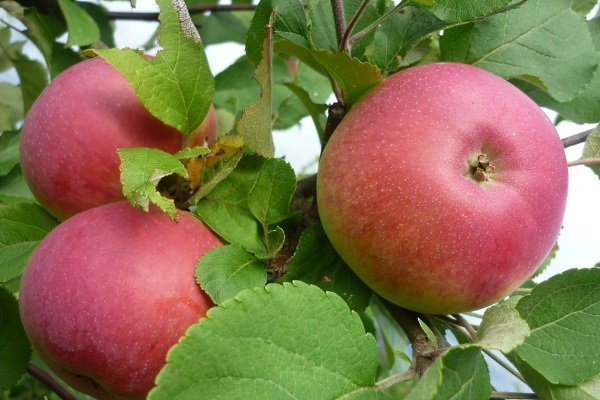

The variety enters fruiting 3-4 years after planting the seedling. The advantages of Marat Busurin include abundant and regular fruiting.The apple tree does not need annual breaks from fruit setting. The average yield is 100-120 kg per adult plant.
Among the large number of apple varieties, gardeners can choose those varieties that best match the desired characteristics. For cultivation in the Moscow region, many summer, autumn and winter varieties have been bred, pleasing with good yield indicators.
0
What are the criteria for choosing a variety
Before planting, it is important for a gardener to determine what kind of apples he wants to get as a result. Breeders have bred many varieties of apple trees, but they need to be grouped to highlight the main criteria.
It is necessary to take into account important parameters for stability:
- drought;
- frost;
- infections.
Cold is one of the enemies of the garden, the root system of apple trees can withstand -20 degrees. The Moscow region is characterized by temperature drops and below the required mark. The farmer needs:
- prepare the seedling for wintering;
- cover the root securely;
- insulate the trunk;
- remove dry branches;
- treat the tree from pests, they hide in the bark for the winter.
The tree must be resistant to infestations. Apple trees are affected by a fungus:
- cytosporosis;
- scab;
- powdery mildew.
In the Moscow region, due to wet and cloudy weather, comfortable conditions are created for the development of various diseases. The grower must prepare for effective fungal control.
Fruiting speed is one of the important factors. When laying out a garden, they try to plant such a variety so that it will start to delight with apples in the near future.
For dwarf and standard apple trees, this property is characteristic. When laying a garden, take into account cross-pollination. Therefore, trees of different heights should grow on the site.
Climatic features of the region
The climate in the Moscow region is unstable, with low temperatures during the winter months. In summer, the weather can be hot and dry or rainy and cool. Such conditions often cause the death of an apple tree due to freezing and infection by fungal infections.
In order to maintain the size of the crop and not lose the planted tree, you need to choose zoned varieties. Choosing a variety for planting in a country house in the Moscow region, the emphasis is on frost tolerance and high immunity to fungal infections.
Variety North Sinap
Description of the variety
At the present time, probably, many gardeners would give the "palm" to this particular variety (among the late winter varieties), although not so long ago Antonovka was considered the leading one. What is so good about the North Sinap variety?
The fruit of this variety looks somewhat different from the varieties that we considered above. It has a fancy elongated shape (glass-like), yellow-green in color, usually with a one-sided blush, somewhat heterogeneous and bumpy. But all this does not prevent him from looking very appetizing.
Apple pulp with a greenish tint, fine-grained, sweet and sour, with a slightly spicy taste. The fruit is medium in size (90-120 g). Harvesting maturity is reached somewhere in the beginning of October, it is not recommended to pluck them earlier, because during the ripening period they may simply not mature, especially if the summer is not very warm.
The tree grows quickly and reaches a large size, maybe therefore, in order to save space, some gardeners may prefer other, more compact varieties. Begins to bear fruit in the fifth year, the yield of the variety is quite high, but begins to decline after 20 years.
Among the advantages is the high keeping quality of the fruit. It is even longer than that of the Bogatyr variety and can last longer than June. But, this is provided that the fruits were not picked earlier than the due date, otherwise they will begin to wither and lose their juiciness.
One cannot fail to note the good resistance of this variety to frost. It is the same as that of Antonovka, only the latter, alas, cannot boast of storage duration and loses its taste and appearance already in January.The yield of the variety is also quite high and at the age of fifteen of the tree, it can be about 170 kg.
The disadvantages may be: the large size of the trees, the heterogeneity of the fruits, their decrease with a plentiful harvest, the need for frequent pruning.
Care features
Care consists in timely pruning, and not only in order to preserve the harvest, but also to prevent scab disease, because this variety does not have a high resistance to this disease.
Read also: Apple jam: transparent slices, product selection, cooking recipes
In addition, it is recommended to plant other pollinating trees nearby, since the variety is partially self-fertile. Best of all, if it is an ordinary Antonovka. Well, and, of course, one should not forget about feeding, watering and spraying, as the main stages of plant care.
Features of Antonovka Ordinary
Antonovka is a collective species, bred by its folk breeders, but apples have gained extraordinary popularity among consumers.
Tall trees have an elongated crown that blooms in spring with white flowers. The apples are fully ripe at the end of October. The fruit retains its presentation well during transportation.
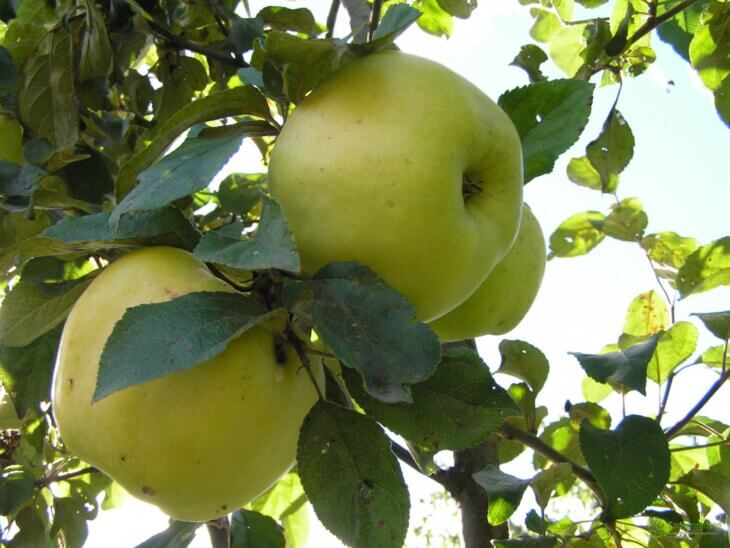

Winter varieties of apple trees - photo
The crop can be removed 7 years after planting. The first time every year, then alternation begins. The apple tree rests for another year and begins to bear fruit.
Quality care includes:
- regularity of watering;
- top dressing from organic matter and mineral fertilizers;
- grass and manure mulching is carried out around the trunk;
- crown formation, cut, shriveled and diseased branches;
- treatment against insects and fungal formations.
Antonovka is marked:
- high yield;
- marketable type of fruit;
- unpretentiousness and resistance to frost and infection.
Many sweet dishes are prepared from this variety, delicious pickled apples.
Taste of apples Tatyana's day
Winter apple trees - photo
The apple tree Tatyana's day, as the description and reviews say, has not yet become widespread, since it was recently bred. Taste qualities are also not for everybody. Green-colored fruits with red stripes have a greenish tint to the flesh.
The sweetness of the taste of apples Tatiana's day is interrupted by the sourness, if they are eaten immediately after collection. When the apples lie down, the acid leaves, leaving a place of juiciness and sweetness.
Positive features of the apple tree:
- long-term storage;
- resistance to disease;
- good adaptation to the climate;
- compactness of dimensions.
The tree bears fruit regularly, it is resistant to frost. In the middle lane, the tree does not need shelter. With a strong drop in temperature, the branches may freeze, which reduces the yield. Despite the resistance to diseases in rainy weather, the apple tree must be treated with a Bordeaux mixture.
Pepin saffron variety
Probably, there are few people who have not heard of this variety, because it is very famous in the territory of the post-Soviet space.
Description of the variety
The fruits, in contrast to the variety described above, are much smaller, more symmetrical, with slightly pronounced ribbing. As a rule, it is yellow-green in color, with a pronounced blush and whitish blotches. The pulp is not snow-white, but rather juicy, with a characteristic wine flavor and a recognizable aroma. Surely many people know that the jam from this variety turns out to be very tasty.
The tree is also not large in size. Quite compact, at an early age it has a rounded shape, but later spreads out in width, the branches are lowered, which gives it a slightly dull look. The shoots, like the leaves, have significant pubescence, which is why they look a little grayish.
The crown is very dense, it needs constant care and thinning, otherwise, the already small apples will become even smaller.Begins to bear fruit in the sixth year.
The "pluses" include the ability to tolerate transportation well, early maturity, stable fruiting, excellent taste, the ability of a tree to recover from frost and, of course, an attractive appearance.
The disadvantages are not very large apples, short shelf life (if Bogatyr, which we talked about above, is stored until May and even early summer, then Saffron Pepin is only until early March), as well as low resistance to scab. In addition, the tree has a high tendency to thicken, which causes additional trouble for gardeners.
Care features
What properties should an apple tree have for good growth and productivity in the Moscow region?
To harvest a good apple harvest, it is necessary to choose varieties that resist pests and diseases well, are not afraid of low temperatures and quickly recover in case of freezing. When choosing the best variety, ripening periods, periods of fruiting and methods of pollination are also taken into account.
The choice is also made in favor of self-pollinated apple trees. The fruits of these varieties of apple trees are tied without pollinating insects. Such varieties of culture for the Moscow region include: Pepin Shaffranny, Melba, Welsey.
External parameters
Tall varieties of apple trees grow up to 7 meters, the crown is wide. They are distinguished by a well-developed root system that penetrates deep into the soil. Therefore, the distance from the surface to the groundwater must be at least 2.5 meters. Large apple trees live and bear fruit longer and do not need to be watered too often. The yield is consistently high.
Medium-sized trees (semi-dwarfs) grow no more than 5 meters in height. The main part of their root system is at a depth of 20-35 cm. All varieties are demanding on soil and regular watering. They begin to bear fruit earlier than tall types of culture.
Low-growing varieties of apple trees are distinguished by a low trunk, up to 2.5 meters high. The root system deepens by one meter. Low trees take up little space and create almost no shade, start bearing fruit early. In the event of an attack by pests and infection with infections, it is easier to cope with the problem. These trees are easy to harvest. The root system is sensitive to moisture, therefore waterlogging of the soil leads to damage.
Read also Onion with pepper and vinegar
Frost resistance
Almost all types of apple trees can tolerate frosts down to -20 degrees. But the air in the Moscow region can drop to -30 degrees, so frost-resistant varieties of apple trees are chosen.
Winter-hardy varieties of fruit crops that can be planted in the garden of the Moscow region: Anis, Orlinka, Aport, Slavyanka, Yellow ribbed, Mirnoe, Semerenko, Antonovka, Bogatyr.
Disease immunity
The apple tree is often subject to various diseases, especially of fungal origin. Diseases such as powdery mildew, scab, cytosporosis can not only reduce the amount of the crop, but can also lead to the complete death of the tree.
Summer in the Moscow region passes with rainy and cloudy days. These conditions are most favorable for the fungus. Therefore, you need to choose apple trees with good immunity.
Experts have developed immune species of apple trees that are resistant to many fungal diseases, including scab. Such apple trees begin to bear large fruits early and tolerate frost.
Scab-resistant types of fruit trees that are recommended to grow in the suburbs: Orlinka, Medunitsa, Yablochny spas, Zhigulevskoe, Slavyanin, Start, Freshness.
Early maturity
Varieties that differ in the early onset of fruiting are most often bought by gardeners. Saplings begin to delight with fruits already 2-3 years after planting.
Self-fertile varieties of apple trees pollinate themselves, so the fruits are tied without pollinators.But in order to obtain a large and numerous harvest, you should try to lure insects that pollinate during the flowering period. Moscow pear, Arkadik, Medunitsa, Antonovka, White Naliv.
Early-growing varieties of apple trees: Beforest, Papirovka, Stark, Erliest. The first crop is harvested three years later. Apple trees feel good after severe frosts, and the harvested crop can be stored for many months.
Dessert hybrid
The breeders bred the winter beauty by crossing Red Delicious with Antonovka Ordinary. The apple tree had to go a long way to full popularity among consumers. Large fruits were to the liking of many, especially culinary specialists and winemakers.
Gardeners appreciated the quality of the fruit:
- juicy apples;
- frost tolerance by seedlings;
- with proper care, the result is a wide range of flavors;
- beautiful appearance.
Ripening occurs at the beginning of autumn. This period is the most successful for planting seedlings. With a plot on fertile land, top dressing is not required. Useful substances must be added to sandy soil annually. If the month is not rich in rains, it is necessary to pour 4 times a bucket of water under the root.
Dwarf and semi-dwarf gardens
Dwarf and semi-dwarf fruit trees have gained great popularity among gardeners. Small, neat trees are characterized by a yield with large sweet apples.
The main advantages of this variety:
- after 2 years, you can harvest the first crop;
- high taste quality;
- it is convenient to pick apples and take care of the plant;
- the beneficial properties of the fruit are combined with an excellent visual perception of the garden with bulk apples or during its heyday;
- the tree, due to the compactness of the root system, takes root well in soil with close groundwater.
Apple trees are planted depending on the structure of the root system - open (only spring planting) or closed (at any convenient time).
Advantages of Bogatyr apples
Trees grow up to 5 m in height with a voluminous crown:
- brown branches;
- curved shape;
- compressed, oval buds;
- thick jagged green leaves;
- large fruits with a bright red blush on the sides.
If harvesting is organized late, apples are stored for a long time. The disadvantages include only their green color when they have to shoot, which they change after they lie down.
Positive characteristics include:
- high productivity;
- lack of periodicity in fruiting;
- ripe fruits do not crumble;
- keep the presentation for a long time;
- resistance to infections.
Care is no different from other varieties. Apple trees require fertilization, watering and preventive treatment with drugs.

